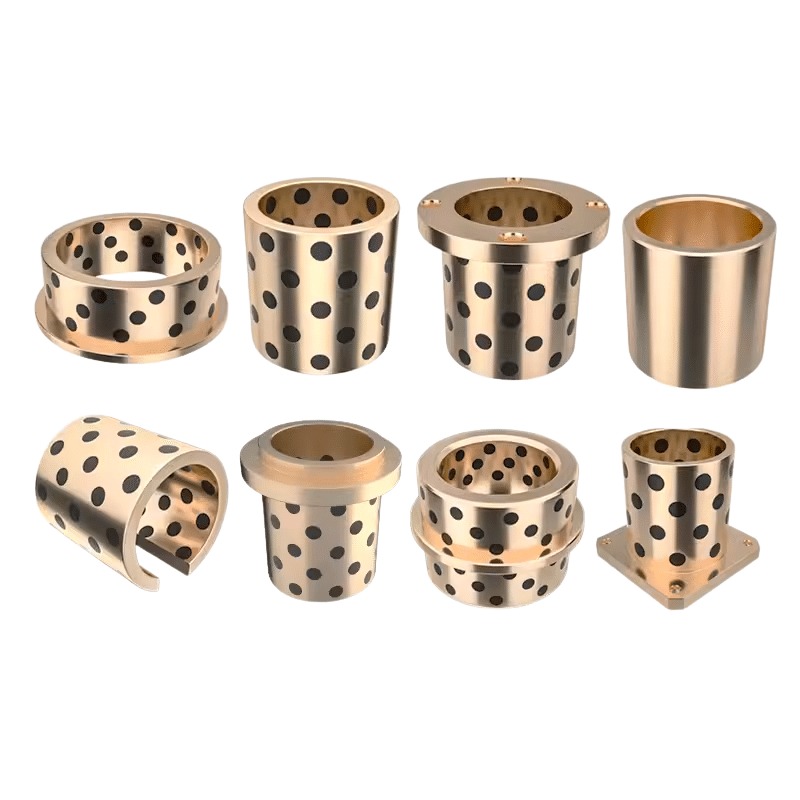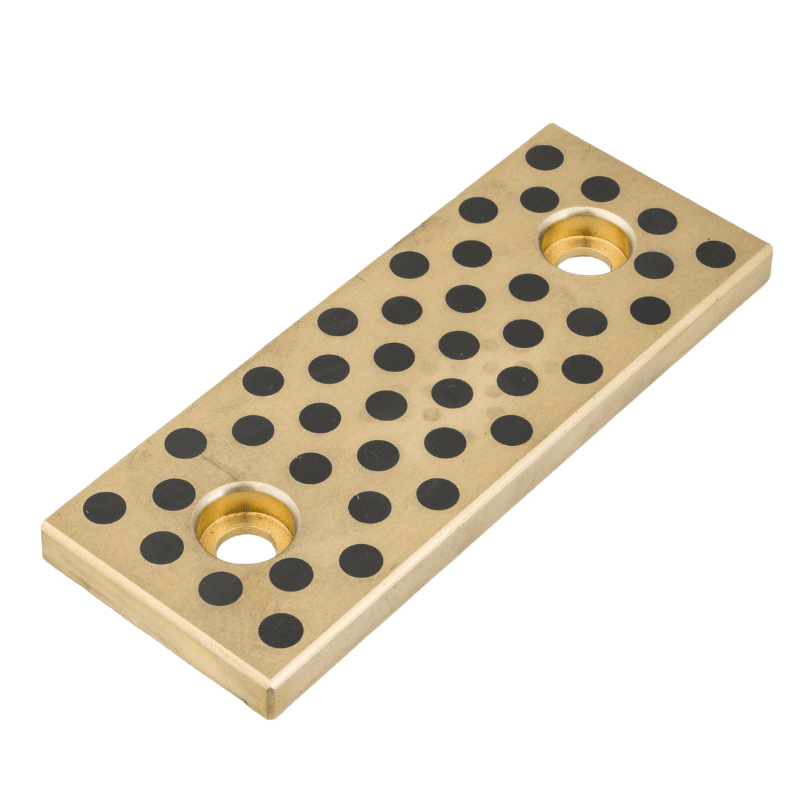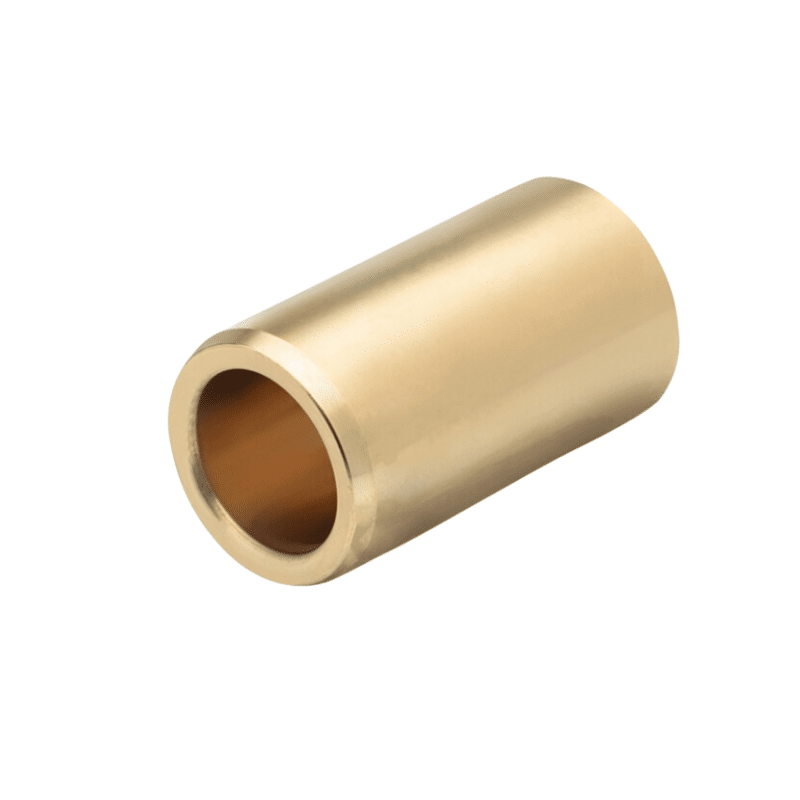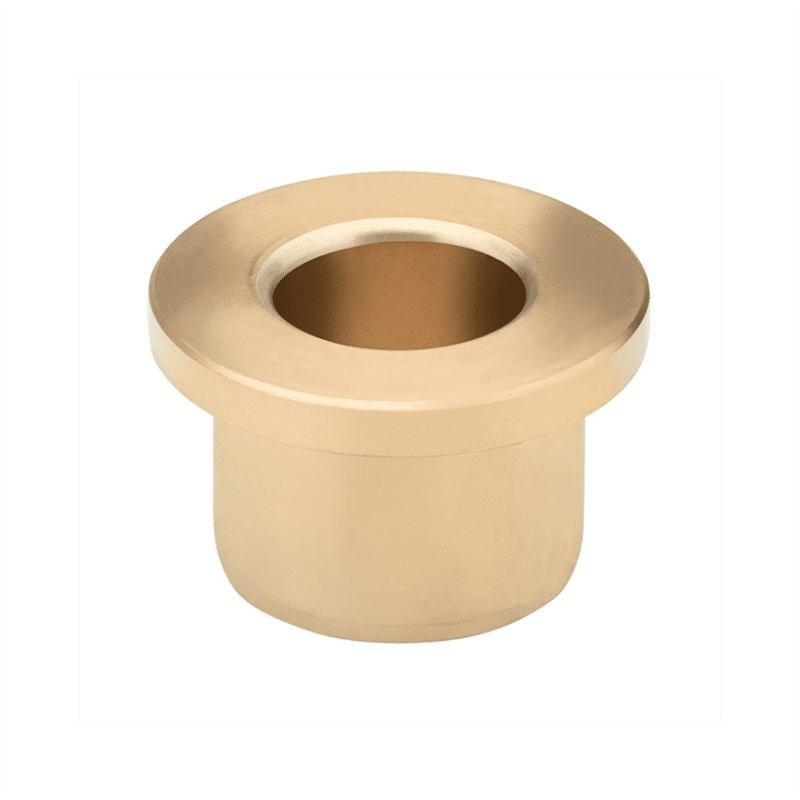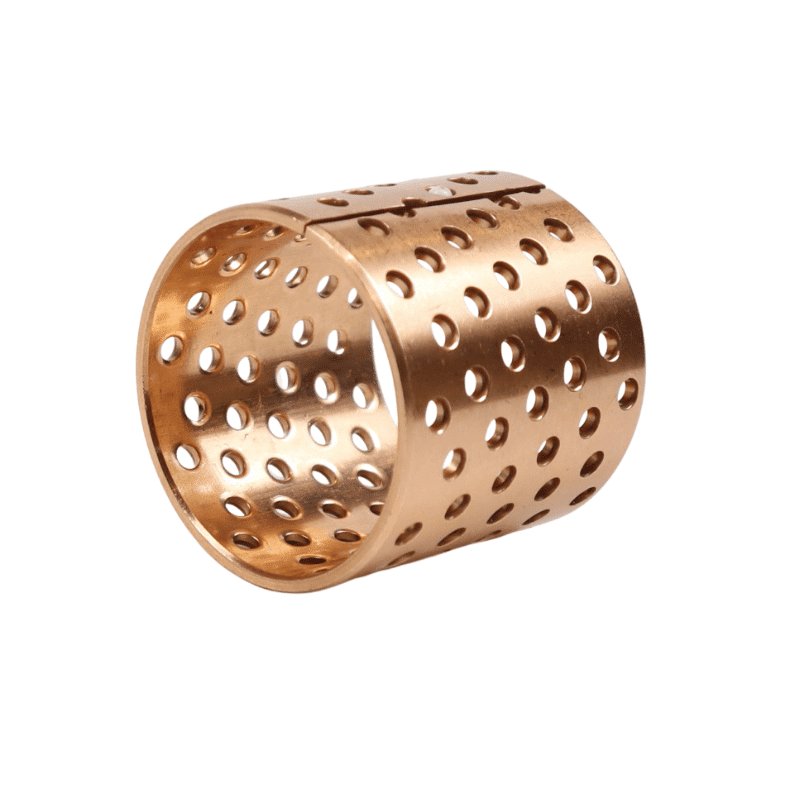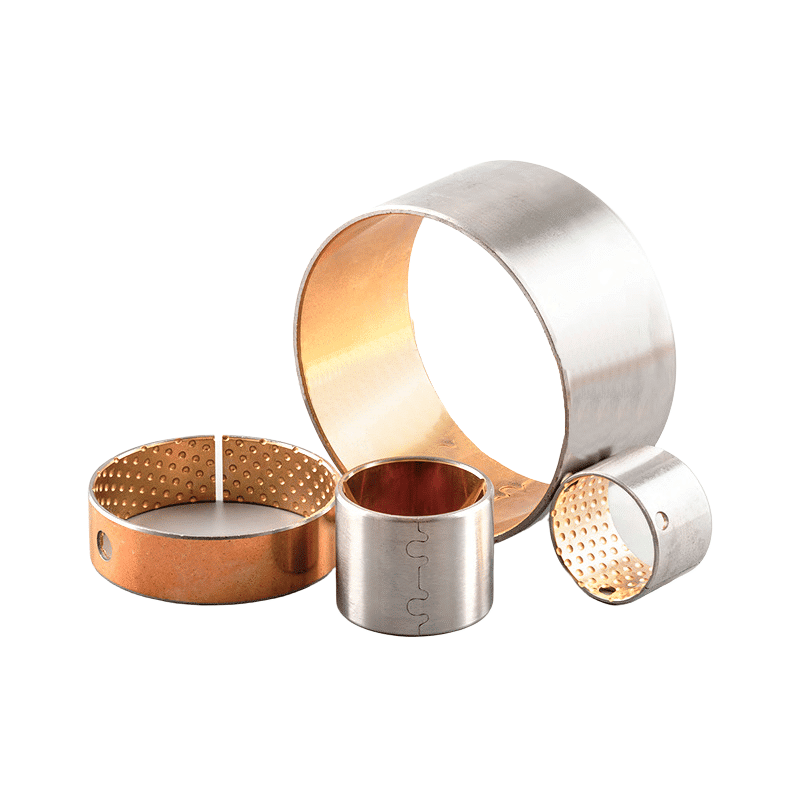Non Ferrous Bushes
Non Ferrous Bushes
Say goodbye to the hassle of frequent lubrication maintenance. Our self-lubricating technology ensures smooth operation and reduces wear and tear, extending the lifespan of your equipment. Experience uninterrupted productivity and cost savings as you bid farewell to the need for messy lubricants and time-consuming upkeep.
Manufacturing on Demand, alternative solutions
Non Ferrous Bushes
Non – Ferrous Bushes (Phosphorous /Gun Metal / Aluminium Bushes)
Non-ferrous bushes are components used in various industrial applications, particularly in machinery and equipment.
- Definition: Non-ferrous bushes are types of bushings or bearings made from non-ferrous metals. These metals do not contain iron as their primary component.
- Materials Used: Non-ferrous bushes can be crafted from a variety of non-ferrous metals, including:
- Phosphorous Bronze: Known for its excellent wear resistance and low friction properties, making it suitable for high-load applications.
- Gun Metal: A copper alloy with tin and zinc, offering good corrosion resistance and strength.
- Aluminium: Lightweight and corrosion-resistant, often used in low-friction applications.
- Applications: Non-ferrous bushes are commonly used in machinery, automobiles, industrial equipment, and more. They serve as bushings or bearings, reducing friction and providing support for rotating parts.
- Advantages: Non-ferrous bushes offer several advantages, including resistance to rust and corrosion, good machinability, and the ability to handle high loads and temperatures.
These bushes are typically produced from high-quality materials that meet or exceed OEM specifications and are tailored for specific applications. They demonstrate remarkable durability, along with an ability to resist corrosion, moisture, and fluctuations in temperature. Designed to operate effectively under high temperatures and in dusty conditions, these bushes find extensive use in industrial settings and are available in a diverse array of sizes and shapes to suit different requirements.
Non Ferrous Bushes (Phosphorous / Gun Metal / Aluminium Bushes, Bronze Graphite Bushing)
Nonferrous bushes, machined bushes, oilless bushes, and lead bronze alloys are varieties of mechanical components, particularly bearings or bushings, employed across multiple sectors for diverse uses. Nonferrous bushes are crafted from metals that lack iron content, making them nonmagnetic. These metals include but are not limited to aluminum, copper, lead, nickel, tin, and zinc. They are celebrated for their anti-corrosion and wear-resistance qualities, along with their durability.
Gunmetal bronze bushes are premium products utilized in general casting processes. Phosphor bronze bushes exhibit excellent anti-friction characteristics along with pliability, making them ideal for high-load applications where lubrication may be uncertain. Aluminum bronze bushes or components are made from an alloy resistant to corrosion, offering superior strength and commonly used in manufacturing impellers and bushes.
Machined bushes are bushings tailored through machining to achieve precise dimensions, ensuring an optimal fit for their intended role.
Oilless bushes, alternatively known as dry bushings or sleeve bearings, are designed to operate without additional lubrication. They support sliding movements by minimizing friction and enhancing stability, making them a favored choice in industrial settings due to their self-lubricating feature and broad application range.
Lead bronze alloy, identified for its exceptional resistance to corrosion and wear and notable longevity, is preferred for bushing production owing to its ease of machining.
Front Cover Bush Self-Lube Bearing and Rear Cover Bush Self-lube Bearing,
Additional Lubrication for Components with Graphite
A Front Cover Bush Self-Lube Bearing is a specialized type of self-lubricating bushing or bearing tailored for installation in the front cover section of machinery or devices across various mechanical fields. Although direct references to “Front Cover Bush Self-Lube Bearing” were not found, its functions and uses can be deduced from the general characteristics of self-lubricating bushings and bearings.
Self-lube bushings, or bearings, come equipped with an integrated lubricant or are treated to contain lubricant, negating the need for external lubrication. This attribute renders them exceptionally suited for harsh or hard-to-reach areas where regular maintenance or lubrication is impractical. Constructed from a range of materials like bronze, plastic, or composites, these bearings are versatile, each material providing distinct advantages for particular uses.
The lubrication within these bearings is introduced through various means, including oil impregnation—achieved through a powder metallurgy process followed by oil soaking—or by embedding graphite plugs into the bushing for continuous lubrication. This design significantly reduces friction, prolongs the lifespan of the equipment, and cuts down on upkeep demands.
Self-lube bushings find application in diverse machinery, from hydraulic cranes and forklift trucks to wind turbines, satellite antennas, and front-end loaders, chosen for their high load resistance, contamination protection, and superior friction and wear characteristics. The design and composition of a specific self-lubricating bushing, like the Front Cover Bush Self-Lube Bearing, are dictated by the application’s specific needs, considering factors like load, temperature, and environmental conditions.
Thus, even though the term “Front Cover Bush Self-Lube Bearing” wasn’t directly identified, it presumably denotes a self-lubricating bushing intended for the front cover location on a device or machine, ensuring low maintenance, enhanced durability, and consistent performance under challenging conditions.
A rear cover bush self-lube bearing, alternatively known as a self-lubricating bushing, is engineered for seamless operation without the necessity for external lubrication. This straightforward bearing type consists solely of a bearing surface, eschewing the need for rolling elements. Such bearings are especially suited for challenging or hard-to-access settings due to their inherent lubrication capabilities or lubricant-infused construction, which minimizes maintenance requirements while ensuring consistent friction and torque levels. They find widespread use in a variety of settings, including but not limited to, drilling apparatus, valves, and pumps. Their suitability stems from their resilience against extreme conditions such as high temperatures, elevated pressures, and corrosive environments where traditional lubrication methods might fail.
These self-lubricating bushings are crafted in a range of materials and configurations, including but not limited to cylindrical bushes, thrust washers, sliding plates, and split bearings, capable of functioning under mixed film lubrication scenarios. They are distinguished by their low frictional resistance, diminished maintenance demands, and capability to endure strenuous operational conditions, positioning them as a favored option across numerous industrial sectors.
Front cover bush self-lube bearings and rear cover bush self-lube bearings represent specialized self-lubricating bearings engineered to diminish friction for a more fluid operation. They find their application where routine lubrication is impractical or unnecessary. The terms “front cover” and “rear cover” may indicate their specific use or location within a larger system, although further specifics on these designations remain unclear.
Non-ferrous bushes, crafted from materials such as phosphorous, gun metal, and aluminum, serve as key mechanical components in a wide range of industries. These bushes are manufactured from non-ferrous metals, which are distinguished by their lack of iron content and nonmagnetic nature. Their notable characteristics include resistance to corrosion and wear, alongside a prolonged lifespan.
Phosphorous bronze bushes, made from a copper alloy that incorporates tin, zinc, and phosphorus, benefit from the addition of phosphorus, which significantly improves their mechanical properties.
Gunmetal bronze bushes are recognized for their exceptional quality and are commonly utilized in various castings. They exhibit enhanced corrosion resistance and possess greater strength compared to other metals, making them highly favorable.
Aluminum bronze bushes or components are known for their corrosion-resistant alloys that boast superior strength, further extending their utility in demanding environments.
Non Ferrous Metal Bushes
Your expert in self-lubricating Bearing
and Bronze alloys – serving globally
Brand replacement products and functionally equivalent parts, alternative solutions
Manufactures flange bronze bearings, service & maintenance companies to meet the exacting specifications required in a wide range of industrial applications.
Machined bronze bushing that meet the exacting requirements & specifications supplied by our clients. Spherical bearings, spindles, semi-spheres and supports that we have manufactured.
You will find to follow a selection of self lubricating bronze bearing material CuSn7Zn4Pb7, CuSn12, CuAl10Fe5Ni5,
CuZn25Al5Mn4Fe3
Alternative solution,We offer an outsourced machining service for bronze bushes, manufacturing precise parts to the designs supplied to us by our clients.
Selection of other composite bushing material of self lubricating bearing that we have manufactured.
Wrapped Bronze Sleeve Bearing, Are you interested in our products?
Manufacturer of bimetal and steel bronze bushing parts according to client’s drawing.

